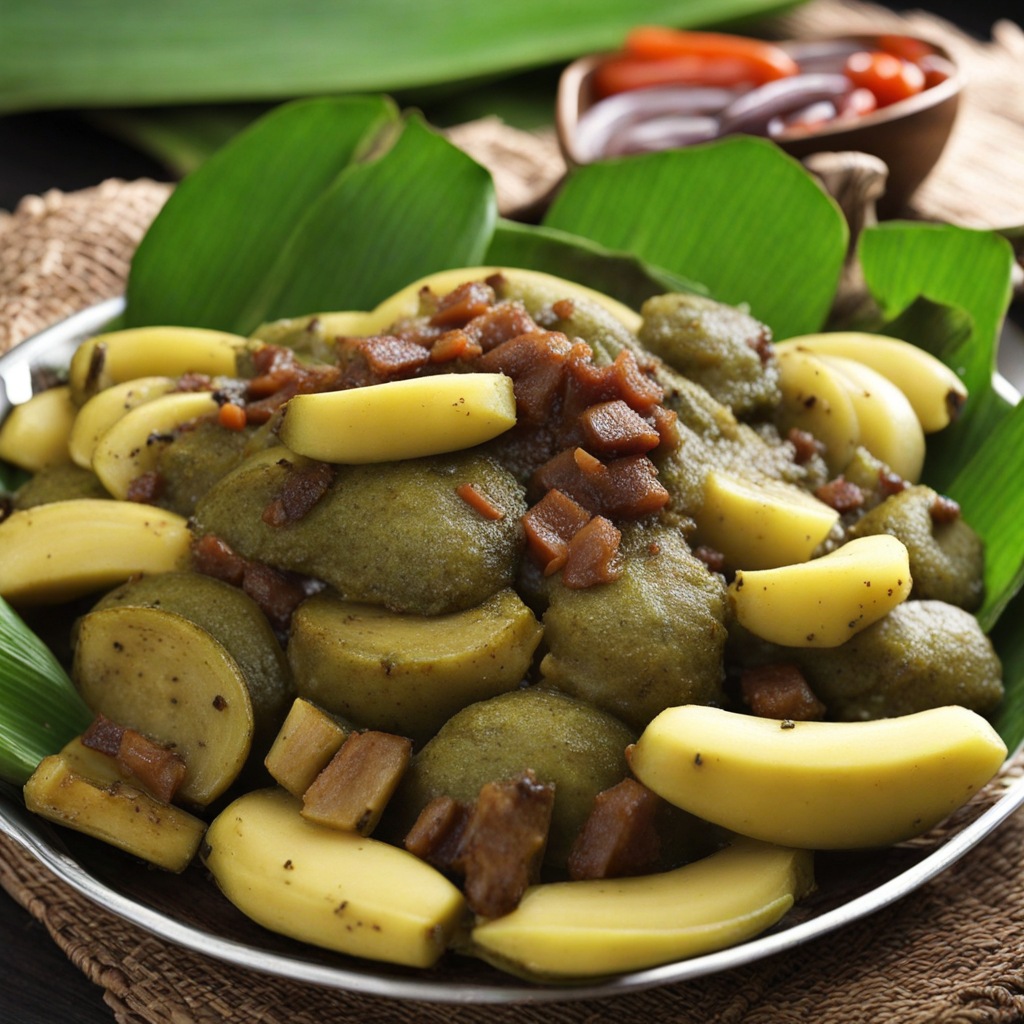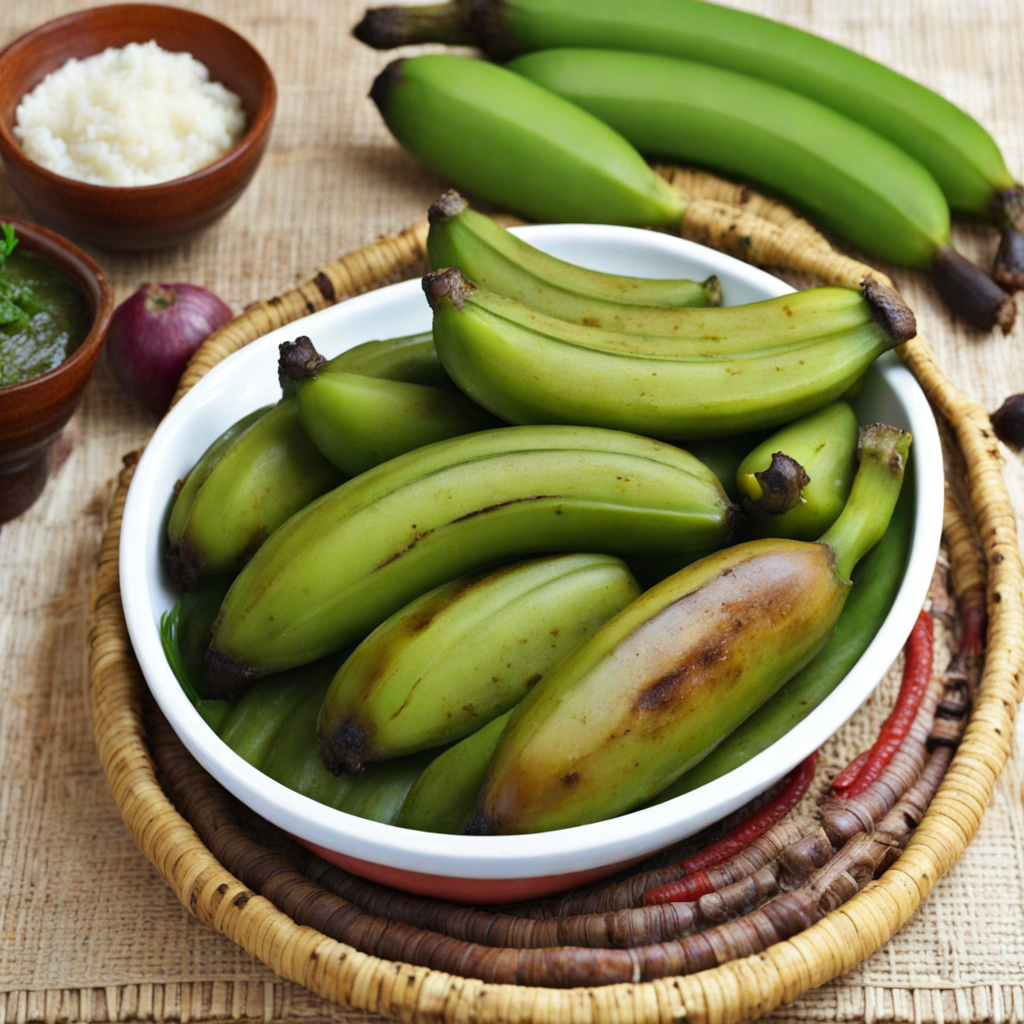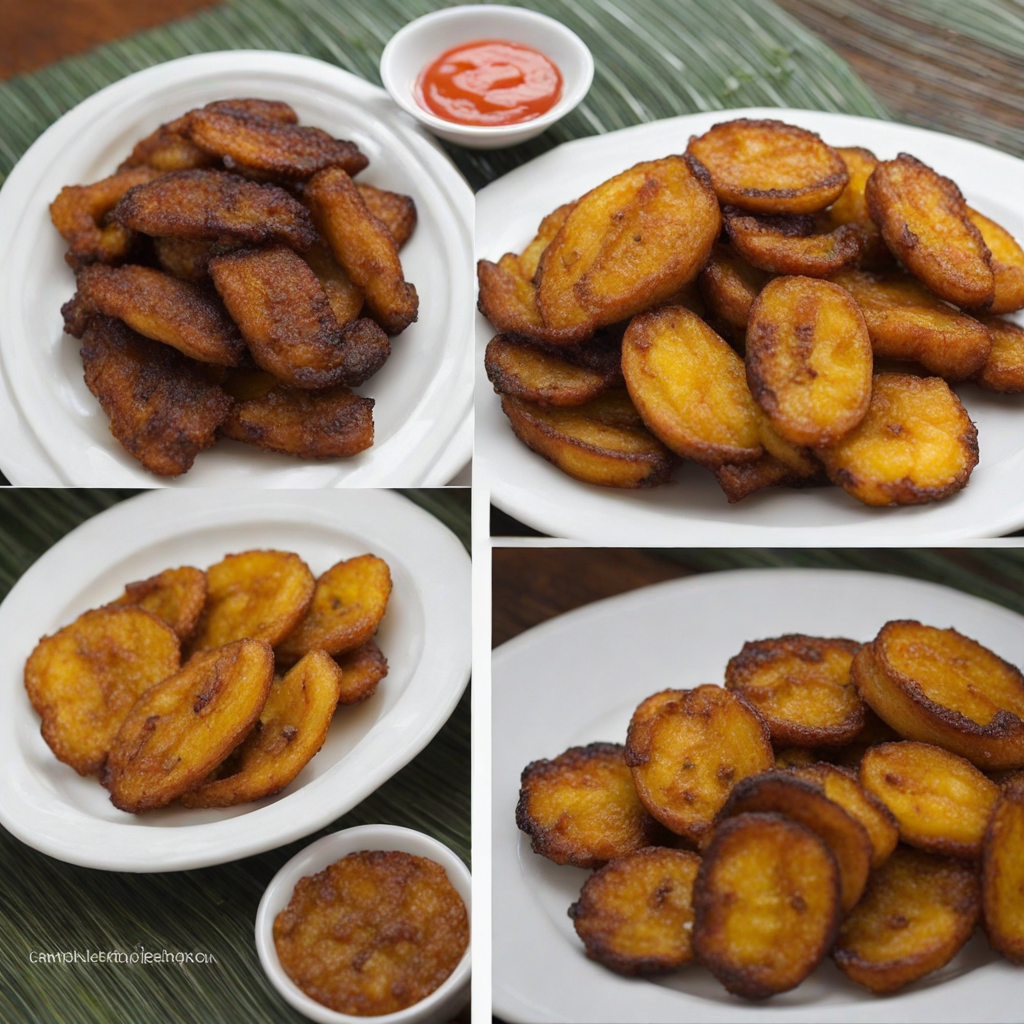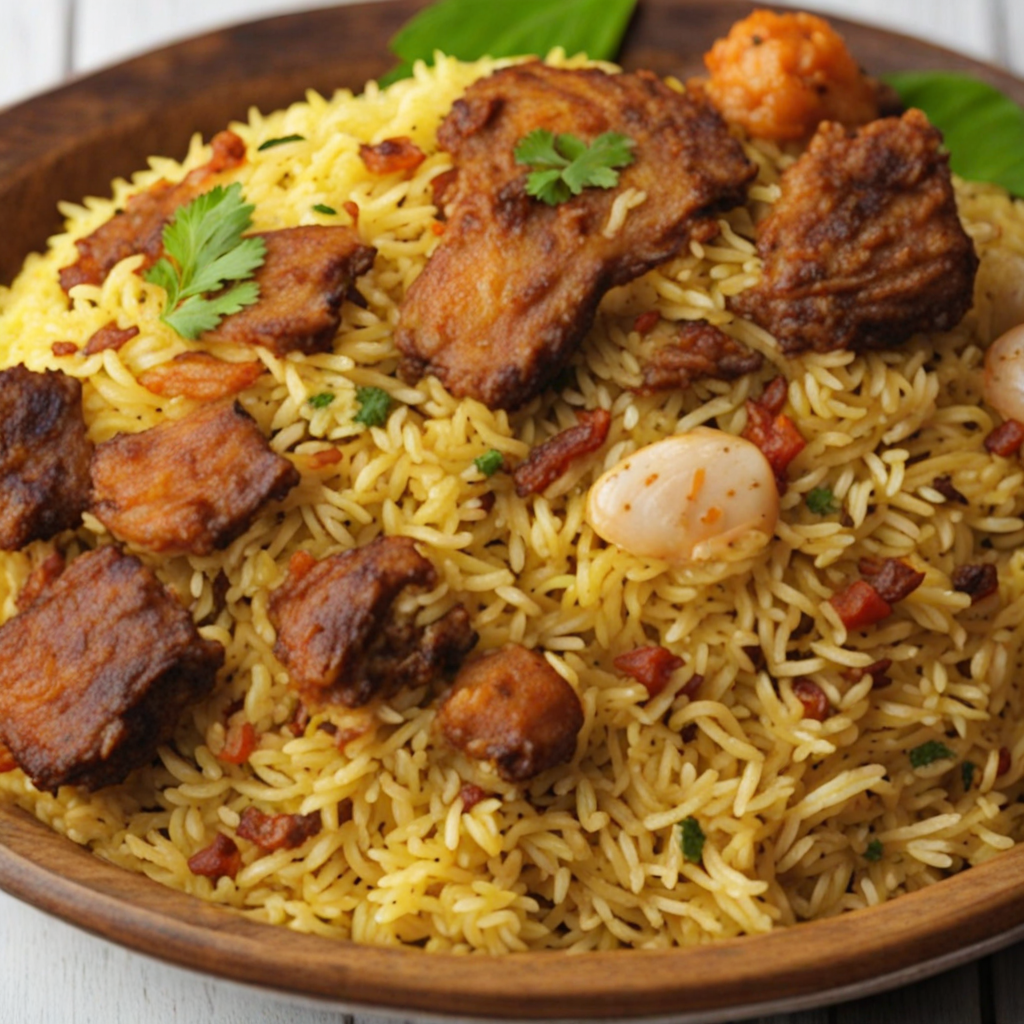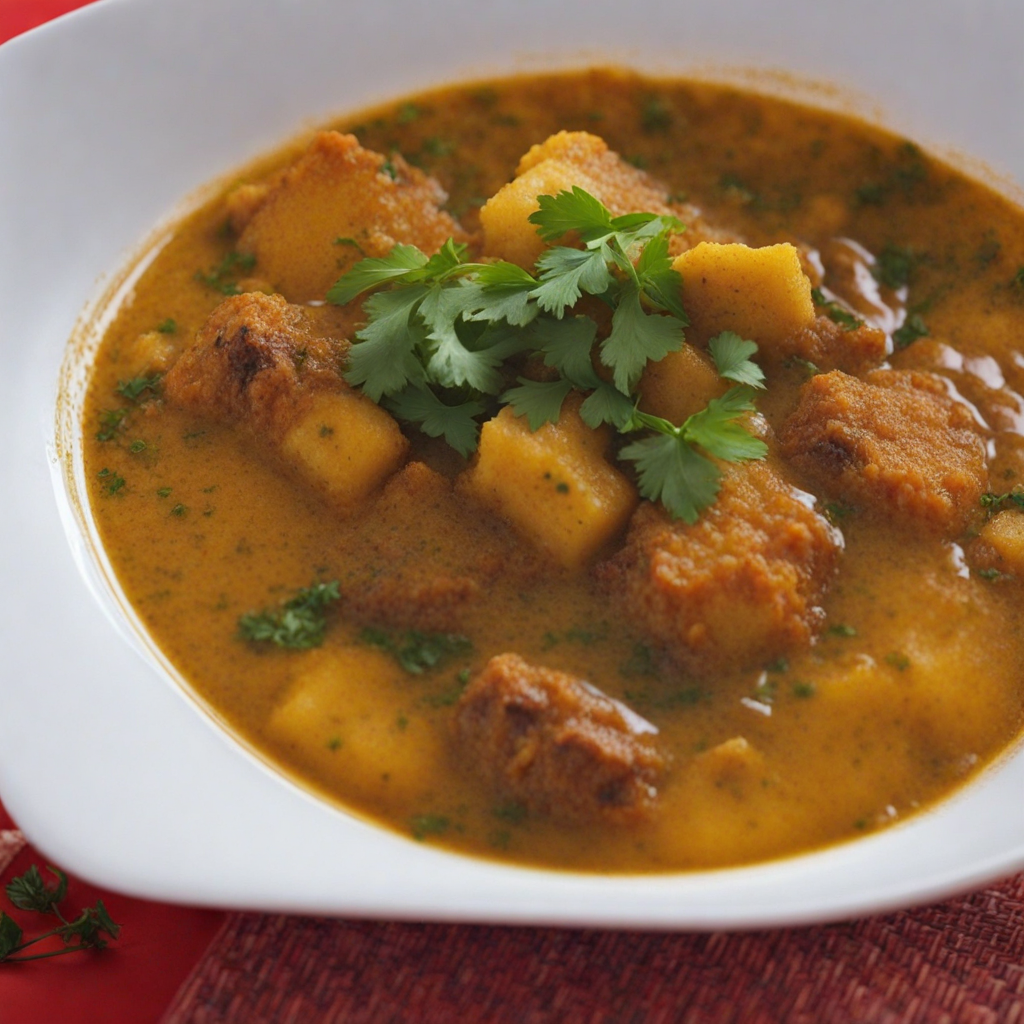Matoke
Matoke, a staple food from Tanzania, is made from green bananas that are typically steamed or boiled. The bananas are peeled and then cooked until they become soft and tender, creating a creamy texture that serves as a perfect base for various dishes. The flavor of Matoke is mild and slightly sweet, allowing it to absorb the spices and ingredients it is paired with, making it a versatile option for both savory and sweet preparations. Traditionally, it is served with meats, stews, or sauces, enriching the overall meal with its starchy goodness. In addition to its delightful taste, Matoke is known for its nutritional benefits. It is rich in carbohydrates, providing a hearty source of energy, while also being a good source of dietary fiber, vitamins, and minerals. The cooking process enhances its digestibility, making it a favored choice among many households in Tanzania. When prepared with local spices and ingredients, such as tomatoes, onions, and peppers, Matoke becomes a flavorful dish that embodies the essence of Tanzanian cuisine. Matoke can also be enjoyed in a variety of ways beyond the traditional accompaniments. Some people like to mash it and mix it with butter or spices for a comforting side dish, while others may use it as a filling in savory pastries. The versatility of Matoke allows for creativity in the kitchen, inviting food lovers to explore new flavor combinations. Whether enjoyed in a home-cooked meal or at a local eatery, Matoke represents the rich culinary heritage of Tanzania, offering a unique taste experience that is both satisfying and memorable.
How It Became This Dish
Matoke: A Culinary Journey Through Time Origins of Matoke Matoke, also known as "green bananas" or "cooking bananas," holds a cherished place in the culinary landscape of Tanzania, particularly in the East African region. The term "matoke" originates from the Kiswahili language, reflecting the agricultural practices and cultural heritage of the Bantu-speaking peoples who first cultivated this versatile crop. Historically, matoke is believed to have been introduced to East Africa from Southeast Asia, likely via Indian Ocean trade routes around the first millennium CE. The banana plant, from which matoke is derived, is a herbaceous perennial that thrives in tropical climates. The variety cultivated for matoke is primarily the East African Highland banana, known for its starchy, firm texture and mild flavor. This variety flourished in the volcanic soils of East Africa, particularly in the regions surrounding Lake Victoria, where the unique microclimate and fertile land made it an ideal growing environment. Cultural Significance Matoke is much more than just a food item in Tanzanian culture; it is a symbol of identity, tradition, and sustenance. In many communities, matoke is intertwined with social and cultural practices. For instance, the plant itself is often used in traditional ceremonies, including weddings and funerals, where it may be presented as an offering or used in celebratory feasts. In Tanzanian society, matoke is a staple food that serves as a primary source of carbohydrates. It is typically steamed or boiled and served as a side dish alongside various stews and sauces, often featuring meat, vegetables, or legumes. The preparation of matoke requires skill and patience, as the bananas must be peeled, steamed, and sometimes mashed to achieve the desired consistency. This process is often communal, bringing families and communities together in the kitchen, thereby reinforcing social bonds. The significance of matoke extends beyond its nutritional value; it is also a symbol of hospitality. In many Tanzanian households, serving matoke to guests is a gesture of goodwill and respect. The dish is often accompanied by a variety of condiments, including spicy tomato sauces or rich meat stews, showcasing the diverse culinary influences that have shaped Tanzanian cuisine over time. Development Over Time As Tanzanian society evolved through the centuries, so too did the cultivation and culinary uses of matoke. The arrival of Arab traders in the 7th century and European colonizers in the 19th century introduced new agricultural practices and ingredients that enriched the local cuisine. The fusion of these influences led to innovative ways of preparing matoke, integrating it into various regional dishes. During the colonial period, matoke's prominence as a staple food became even more pronounced. It was cultivated not only for local consumption but also for export, especially to meet the demands of the growing urban populations in cities like Dar es Salaam and Mwanza. The development of infrastructure, such as roads and railways, facilitated the movement of matoke to markets, ensuring its availability and popularity. In contemporary Tanzania, matoke continues to evolve as a culinary staple. Urbanization and globalization have introduced new cooking methods and flavor profiles, leading to modern interpretations of traditional dishes. Chefs and home cooks alike are experimenting with matoke, incorporating it into fusion dishes and even adapting it for international cuisines. For instance, matoke has found its way into curries, stir-fries, and salads, showcasing its versatility and adaptability. Furthermore, matoke has gained recognition on the international stage, particularly as interest in African cuisine grows. Food festivals and culinary events have featured matoke, introducing it to global audiences and highlighting its cultural significance as a quintessential East African food. The rise of food tourism in Tanzania has also contributed to the appreciation of matoke, with visitors seeking authentic culinary experiences that showcase local ingredients and traditional cooking methods. Sustainability and Future Prospects In recent years, there has been a growing awareness of the importance of sustainable agriculture and food security, particularly in the face of climate change. Matoke cultivation is being re-evaluated to ensure it remains a viable crop for future generations. Efforts are underway to promote environmentally friendly farming practices, support smallholder farmers, and enhance the resilience of banana production systems. Research into the nutritional benefits of matoke is also providing new insights into its role in combating malnutrition. Rich in vitamins and minerals, matoke is increasingly recognized for its health benefits, making it an important food source in addressing dietary deficiencies. As the world becomes more interconnected, matoke’s potential as an export commodity is also being explored. There is an opportunity for Tanzanian farmers to tap into international markets, promoting matoke as a unique and nutritious food product. Conclusion Matoke is more than just a staple food in Tanzania; it is a testament to the rich cultural heritage and agricultural practices of the region. From its origins in Southeast Asia to its prominent role in Tanzanian society, matoke has evolved over time, adapting to changing culinary trends while remaining a symbol of hospitality and community. As we move forward, matoke stands at the intersection of tradition and innovation, with the potential to thrive in a globalized world while continuing to nourish the hearts and bellies of the Tanzanian people. Whether enjoyed in a traditional stew or a modern fusion dish, matoke is a culinary treasure that encapsulates the spirit of East African cuisine.
You may like
Discover local flavors from Tanzania


